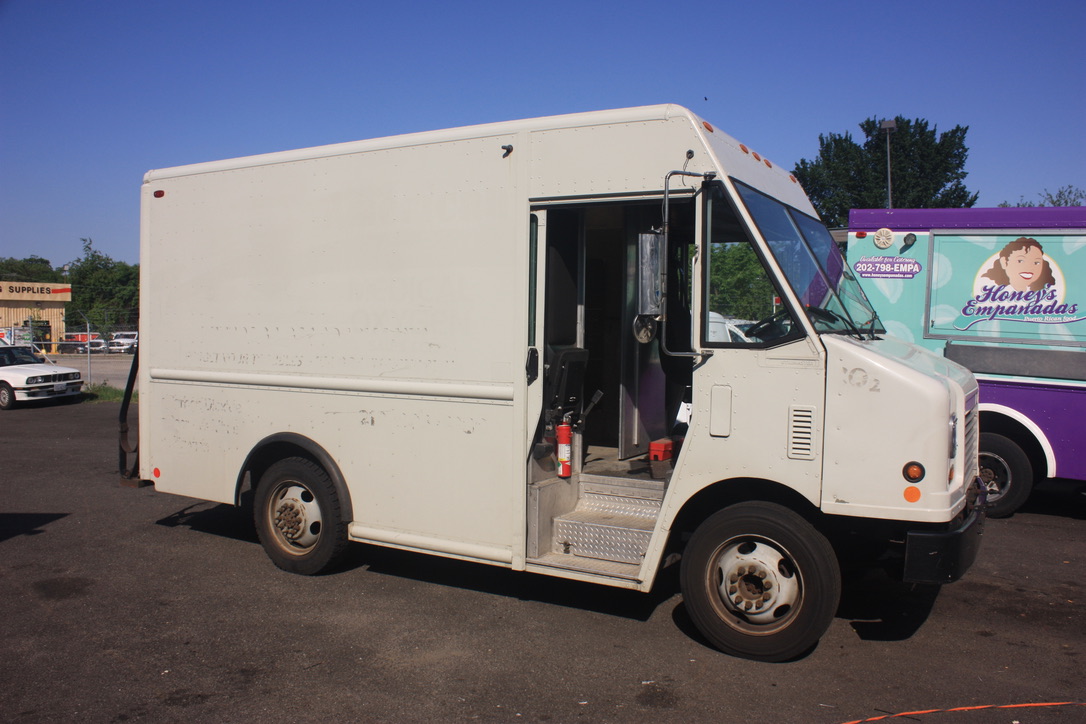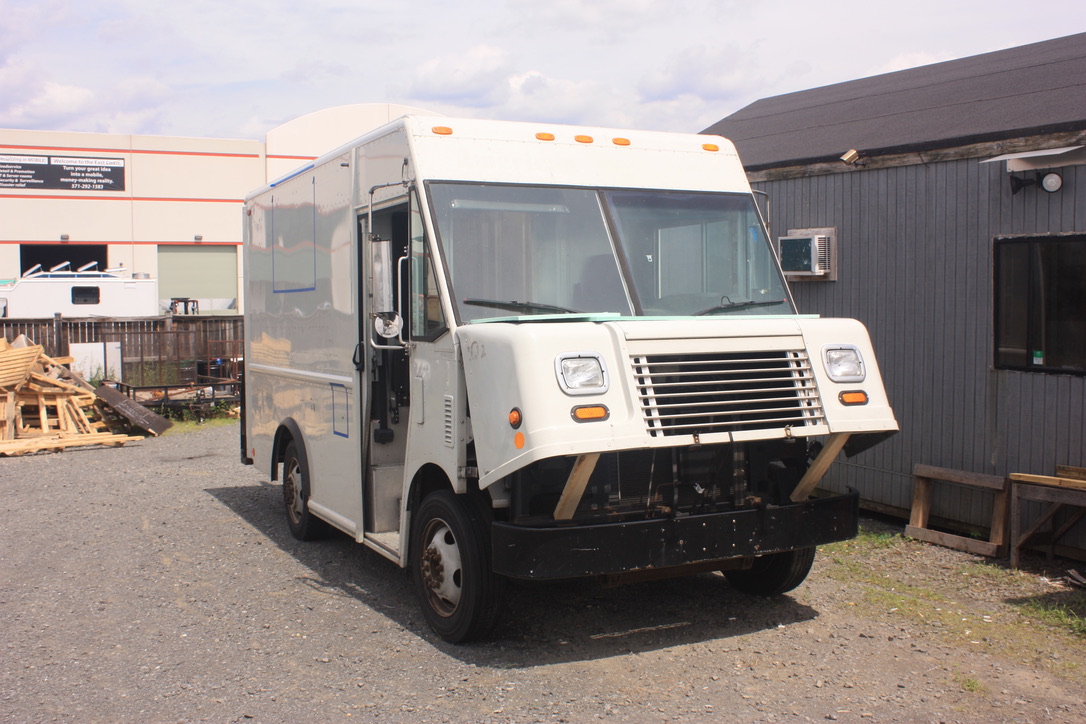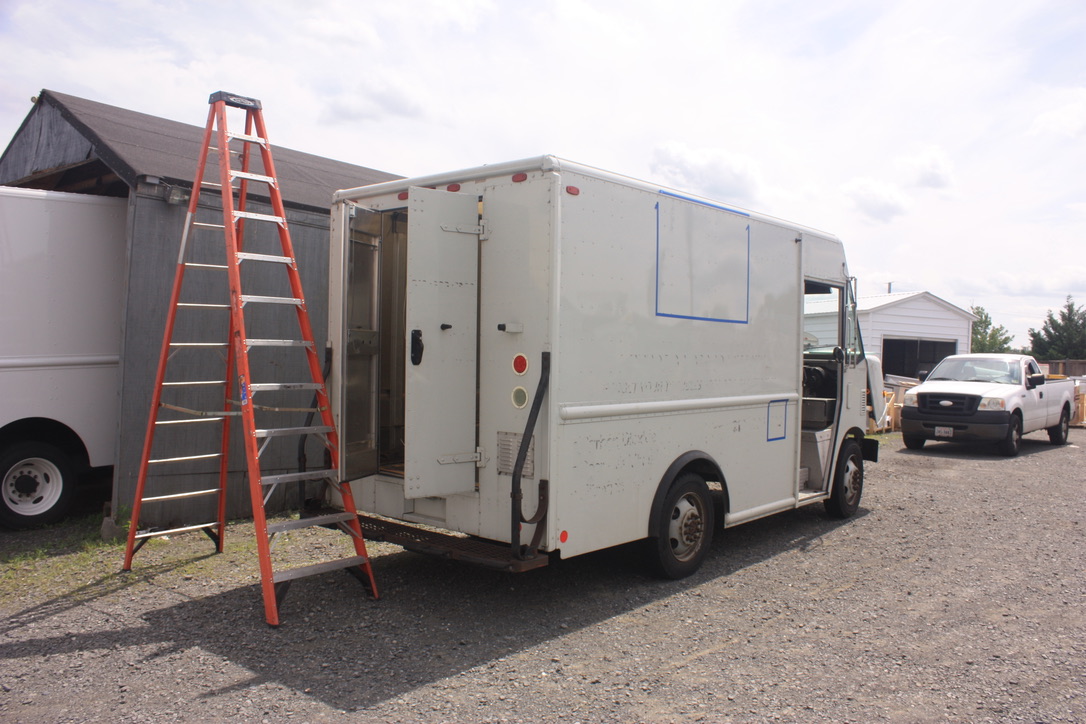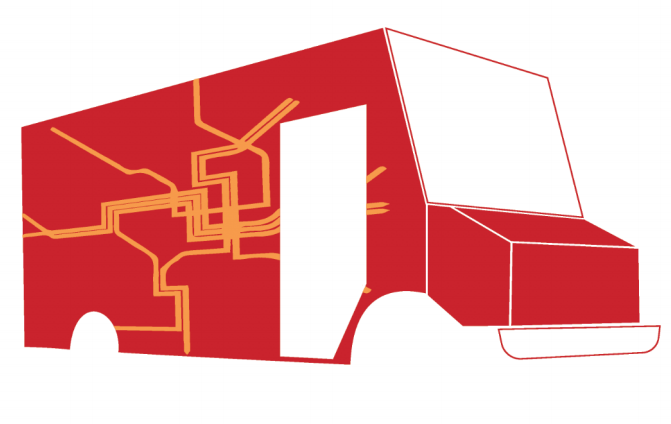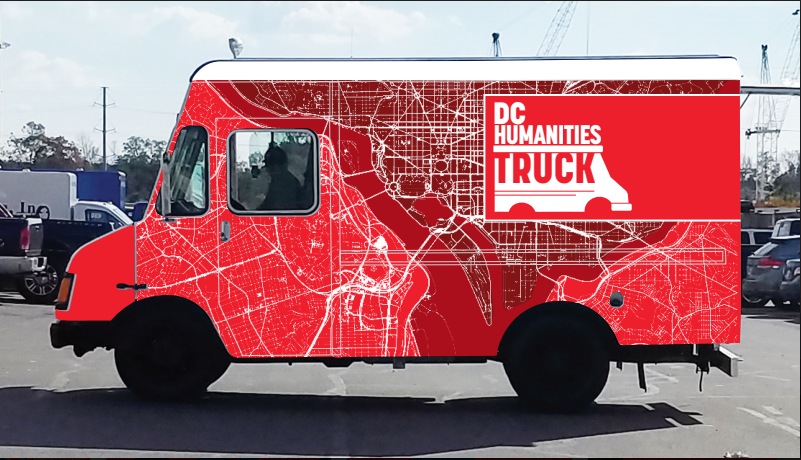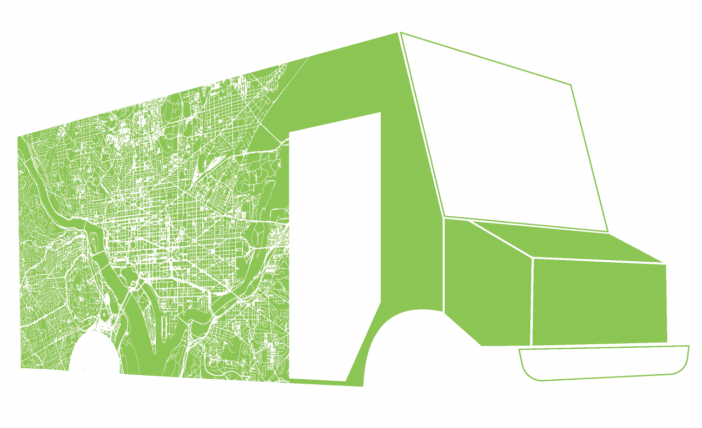It has been well over a year now since I first picked up the Humanities Truck in Manassas, Virginia and drove it back to American University to start the fall semester in 2018. To this day, as I enter the truck, I can’t help but smile with amazement at what we accomplished in our years of planning. Every detail – from the flooring, the cabinetry design, the lighting, to even the outlet covers – took untold hours of detailed design work. It looked stunning when I first saw it, and it continues to amaze me to this day.
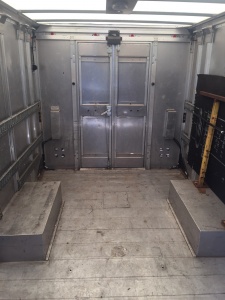 I vividly recall specific moments from meetings and conversations that led to major decisions that still shape the way we do our work. Our working group debated whether the truck should be green, silver, or some other color before we decided it should be blood red, to represent the connection between hearts and minds. We concluded a road map of the DMV region would represent circulation (not a Metro map).
I vividly recall specific moments from meetings and conversations that led to major decisions that still shape the way we do our work. Our working group debated whether the truck should be green, silver, or some other color before we decided it should be blood red, to represent the connection between hearts and minds. We concluded a road map of the DMV region would represent circulation (not a Metro map).
The seemingly obvious choice of painting the interior walls white, which has defined the space as an exhibition space, came from our museum specialist Malgorzata Rymsza-Pawlowska. The idea to have bolt holes embedded in the wall to allow for the mounting of shelving and furniture came during a call with a group member’s friend in Montana. He was consulting with us regarding our audio-visual tech needs, when he suggested this discrete and simple solution to making our space flexible. The electric outlet and audio jack in the back of the truck was put there specifically to power Benjamin Stokes’s “storytelling system.” Other decisions were subtler, yet not easy. We had a conference call where we spent a half hour debating whether the logo on the driver’s side should face towards the front of the truck or towards the city. In the end, we wanted a consistent logo – it faces towards the city.
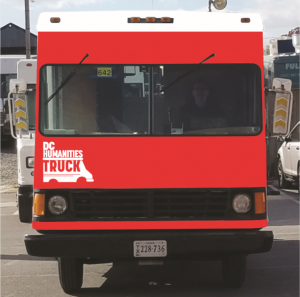 While there are a few minor things I might have done differently, I remain amazed at how much we got right. As you can see from our first annual report, the truck has been a huge success engaging with communities across Washington, DC. While we’re still discovering many new creative ways to use the truck, the extensive initial planning has put us in a great position to drive this project forward.
While there are a few minor things I might have done differently, I remain amazed at how much we got right. As you can see from our first annual report, the truck has been a huge success engaging with communities across Washington, DC. While we’re still discovering many new creative ways to use the truck, the extensive initial planning has put us in a great position to drive this project forward.



